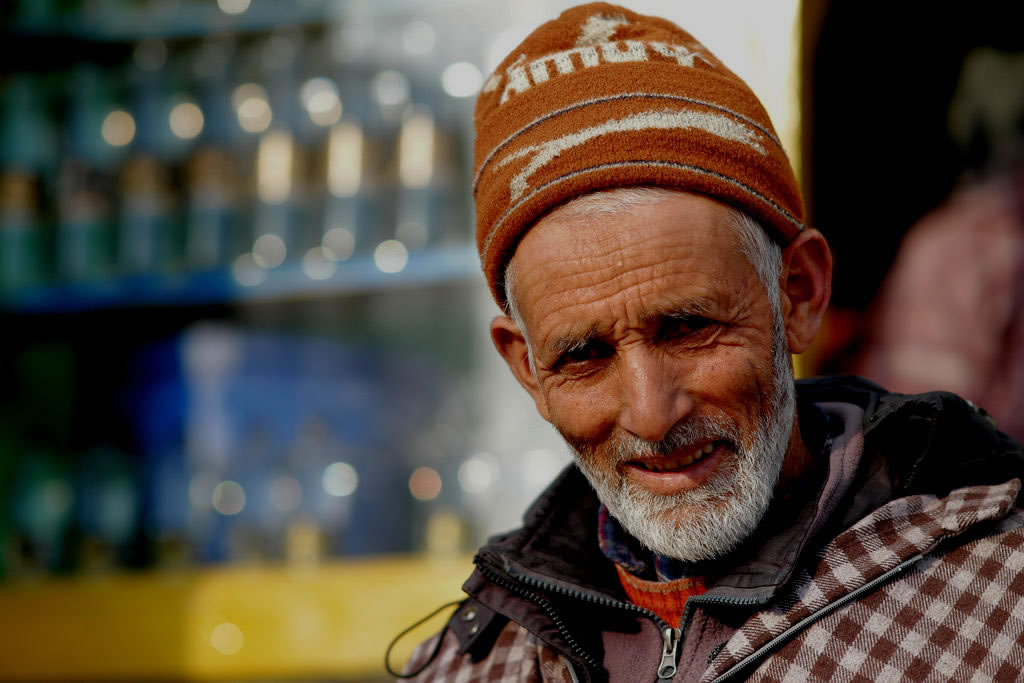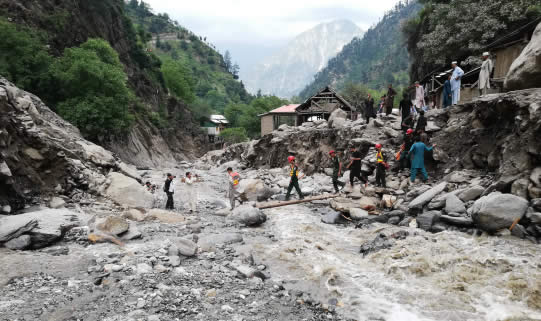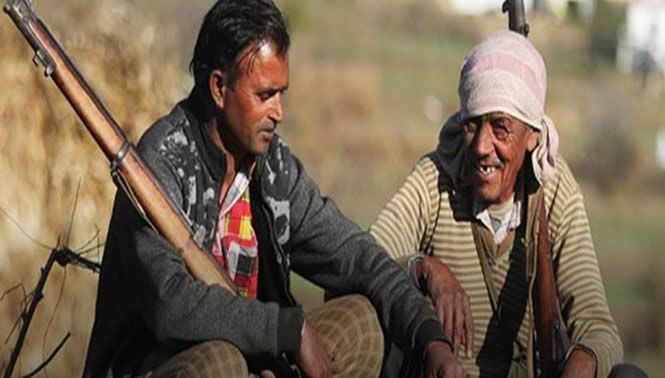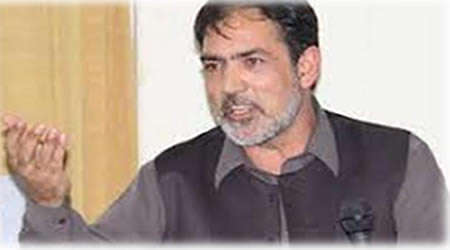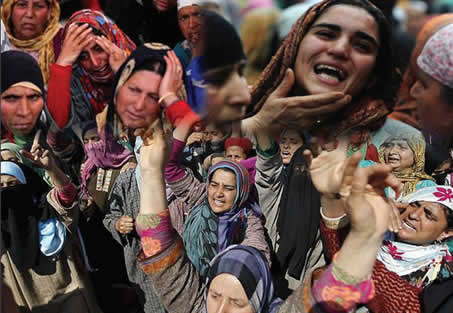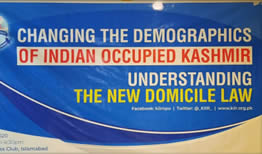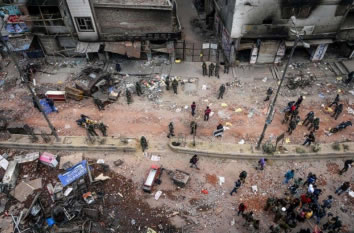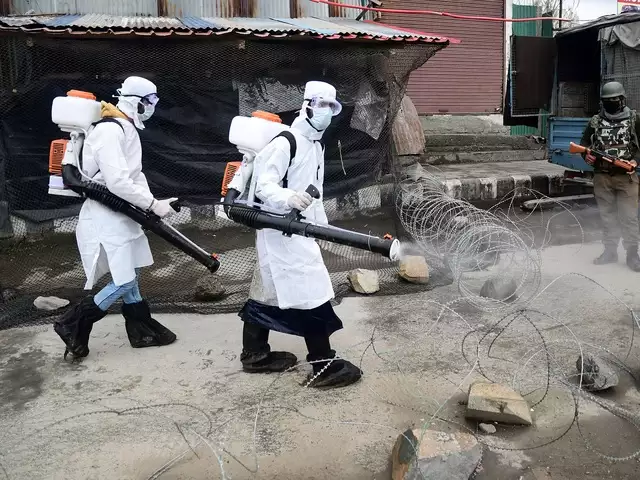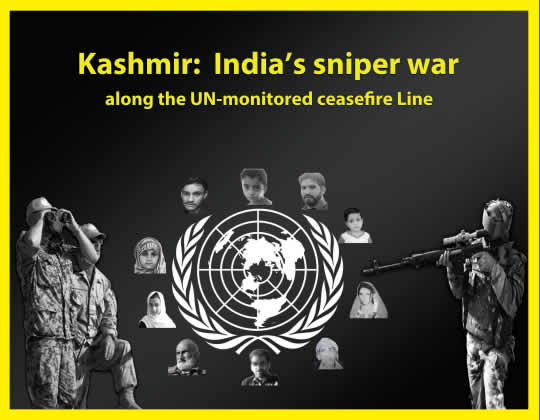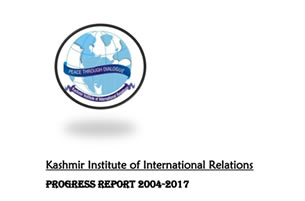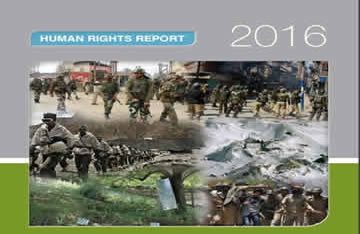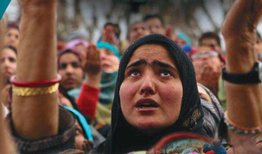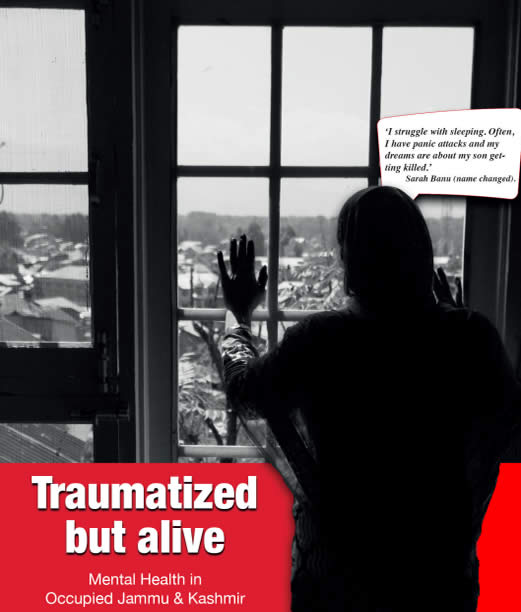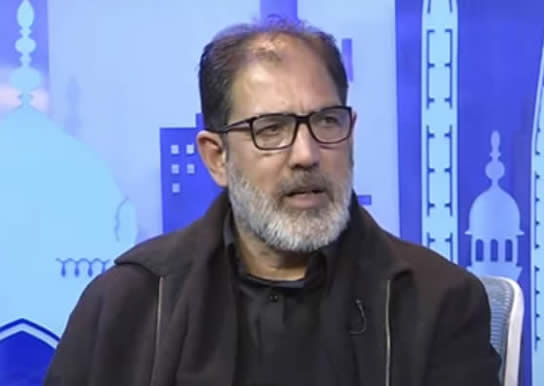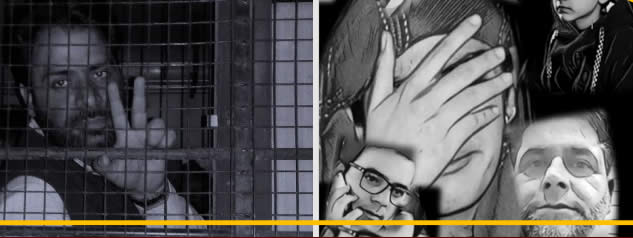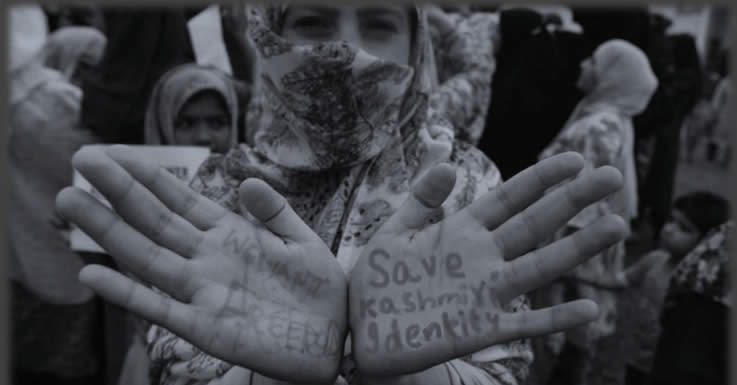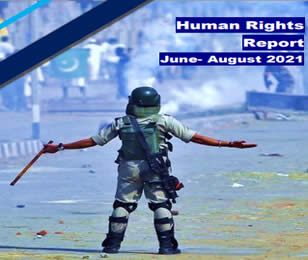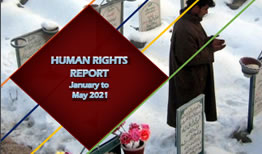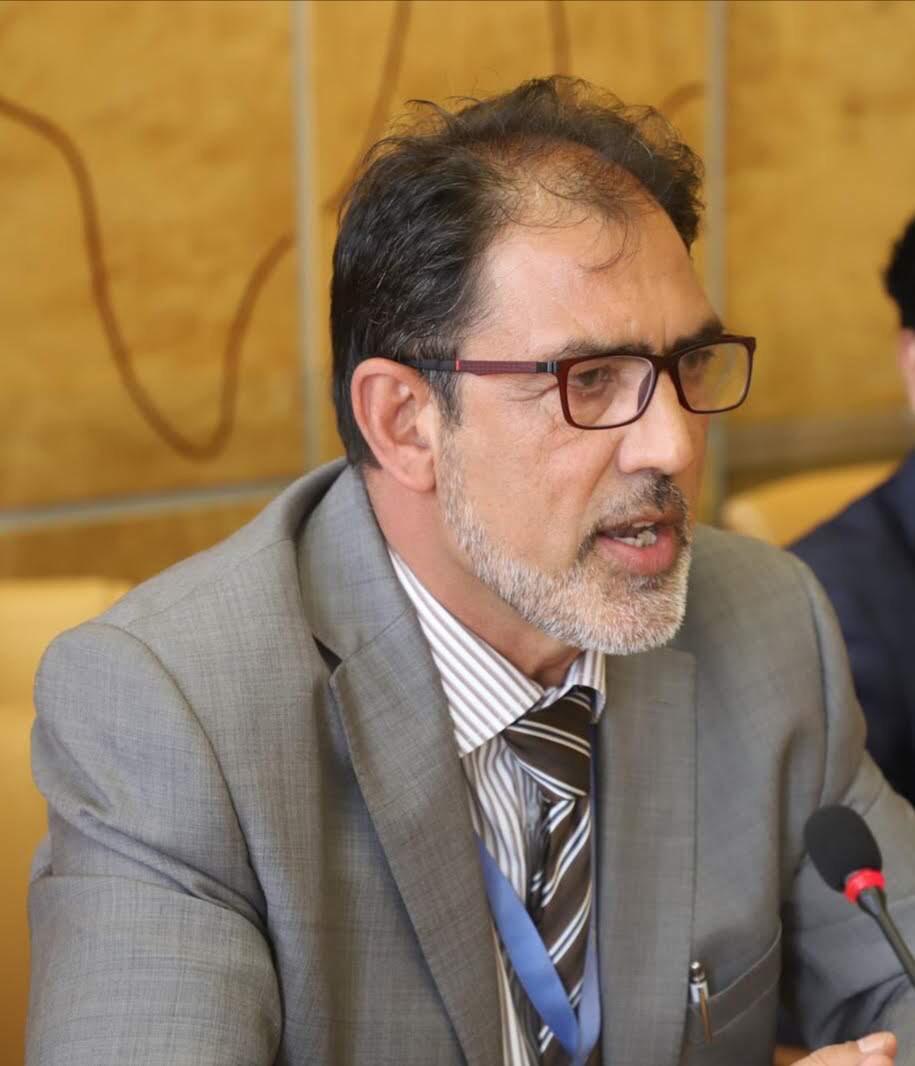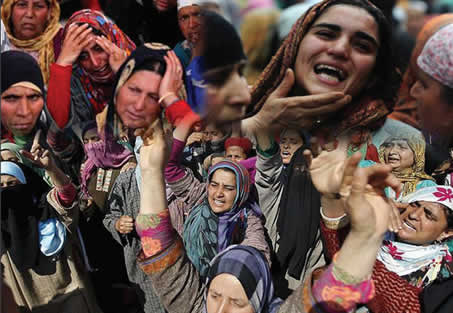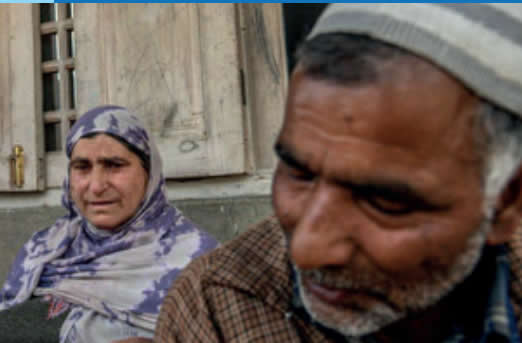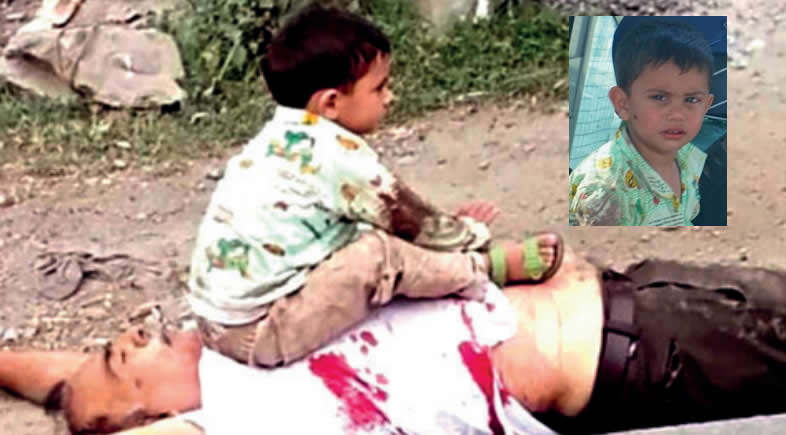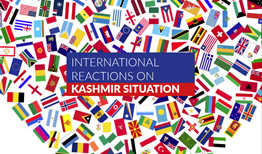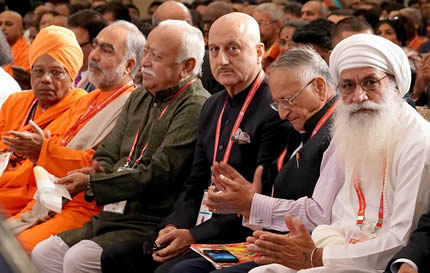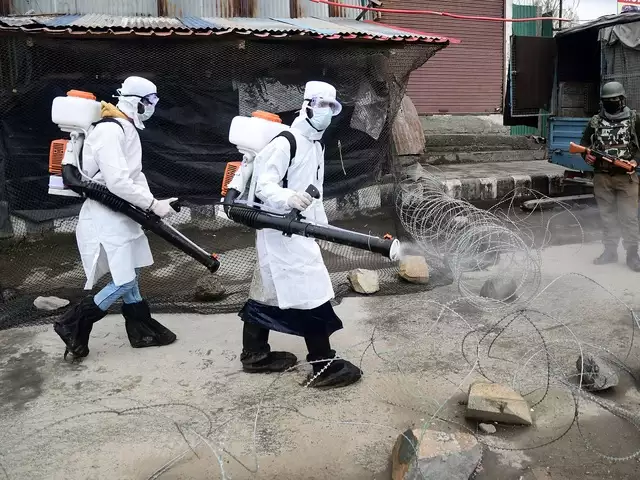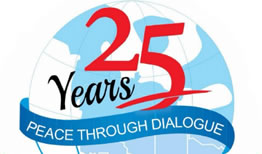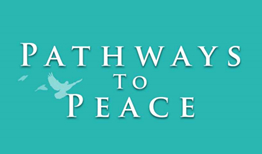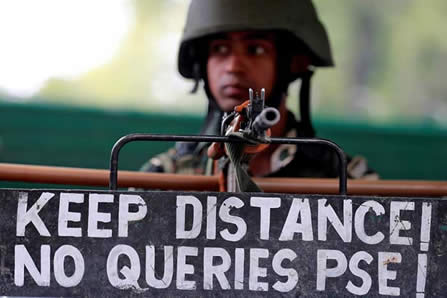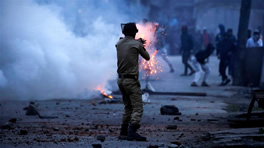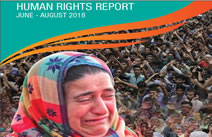Towards annexation & Indianization of Kashmir in broad daylight
16/03/2025
Silvia Pracilio,
Bachelor in Global Law and Transnational Legal Studies (2nd year student), University of Turin
Review on the Report “Towards annexation & Indianization of Kashmir in broad daylight.”
The report titled "Towards Annexation & Indianization of Kashmir in Broad Daylight" by the Kashmir Institute of International Relations (KIIR) provides a comprehensive analysis of India's actions in Jammu and Kashmir, particularly as consequences following the abrogation of Articles 370 and 35A on August 5, 2019, and the further establishment of draconian laws, such as the domicile law.
Background
Following the dismantlement of the British Raj in 1947, India and Pakistan came into being as two sovereign powers, while the region of Jammu and Kashmir together with other princely states, not being under the direct control of the British colonial administration, were given the opportunity to choose whether to join Pakistan or India.
Presenting a majority of Muslim people, Kashmir was believed to become part of Pakistan, but the ruler deceptively acceded the territories to India, resulting in a public uprising against him. In 1947, India took the issue to the UN Security Council, which few years later passed a temporary resolution, conferring the Kashmiris the right to decide about their future through an UN-supervised plebiscite. Although, since that outcome, India gradually backed out from its commitment and declared Jammu and Kashmir territories as its integral part.
Abrogation of Article 370 and 35A
On August 5, 2019, the Indian government took a first step towards the actual annexation and Indianization of Kashmir, revoking Article 370 and 35A of the constitution, which had granted the region internal autonomy since 1947. Article 370, originally a temporary provision, limited India's authority over the region to defence, foreign affairs, and communications. Following the abrogation of the Articles, India reorganized Jammu and Kashmir by into two union territories: Jammu and Kashmir (with a state legislature) and Ladakh (under direct central rule).
To prevent uprising of people, the central government imposed suffocating restriction, including blackouts of communications, media, internet, and mobile services. Moreover, reports indicate that more than 80,000 troops were deployed, and more than 13,000 people detained, including prominent pro-Indian political leaders, such as former Chief Ministers Omar Abdullah and Mehbooba Mufti. The revocation of Article 370 and 35A is only the first step of the Indian government’s strategy to assimilate Jammu and Kashmir and to completely integrate the territories to Indian union.
Moreover, these actions are coupled with the longstanding objectives of Hindu nationalist leaders like Shyama Prasad Mukherjee, the founder of Bhartiya Jana Sangh (now BJP). Revocation of Autonomy: India's Legal Overhaul in Jammu and Kashmir The revocation of Article 370 and 35A led to significant legal and administrative change for the territories of Jammu and Kashmir, with approximately two hundred laws issued or amended to deepen the assimilation into the Indian Union. Key measures included the New Media Policy (2020) emanated to control press coverage, this policy contributed to the misinformation, the spread of fake news and the violations to the freedom of press and expression. Another policy introduced was the Domicile Law (2020) which declared that non- Kashmiris are eligible for acquisition of property and permanent status in the region, if they fulfil preconditions/ perquisites as prescribed by law. This law represents a deliberate attempt to alter the demographic composition of Jammu and Kashmir by settling non-native populations.
From an international legal perspective, the law is a clear a violation of the Fourth Geneva Convention, which an occupying power from transferring its own civilian population into an occupied territory. Furthermore, the UN Security Council, UN General Assembly, and UN Human Rights Commission have condemned such demographic engineering in various contexts. Additionally, in 2004, the International Court of Justice (ICJ) has ruled in its advisory opinion on the legal consequences of the construction of a wall in the Occupied Palestinian Territory, that such policies constitute a breach of international law, in particular that “The Occupying Power shall not deport or transfer parts of its own civilian population into the territory it occupies”. That provision prohibits not only deportations or forced transfers of population, but also “any measures taken by an occupying Power in order to organize or encourage transfers or parts of its own population into the occupied territory.”
Following the opinion of the ICJ the Security Council has taken action and called upon “Israel, as the occupying Power, to abide scrupulously” by the Fourth Geneva Convention and: “To rescind its previous measures and to desist from taking any action which would result in changing the legal status and geographical nature and materially affecting the demographic composition of the Arab territories occupied since 1967, including Jerusalem and, in particular, not to transfer parts of its own civilian population into the occupied Arab territories.” Historically, demographic changes in the region have been driven by massacres, forced migrations, and wars, notably in 1947, 1965, and 1971. More recently, state-led persecution has caused thousands of Kashmiris to flee.
Further concerns arise from land appropriation policies, in particular over the Development Act (2020), the Right to Fair Compensation and Transparency in Land Acquisition, Rehabilitation and Resettlement Act (RFCTLARRA) (2013) and the permitting the Indian Army to designate any area as "strategic," enabling land acquisition without standard legal procedures to be taken by any local authority, thereby dispossessing native Kashmiris. These developments reflect a broader strategy to consolidate Indian control over Jammu and Kashmir, diminishing local autonomy and identity while pre-empting future political or legal challenges to its governance.
Cultural Reengineering: Assault on Language, Culture and History
India has taken steps to reshape Jammu and Kashmir’s cultural and historical identity. The aim of the and initiatives taken is to dilute the region’s cultural and religious identity. This is clear in the mandatory teaching of Hindu scriptures in educational institutions, and the government plan to liquor and gambling, by opening two hundred shops, raising concerns about efforts to alter social norms. Additionally, in a police operation targeting literature, authorities confiscated more than 650 books deemed to promote “ideologies of a banned organization”. The Kashmiri voice is suppressed by the language policies, who aim is to diminish Urdu’s role in favour of Hindi, notwithstanding only 2% of Kashmiris speaking it.
Following the revocation of Article 370, administrative restructuring has become a key measure in reshaping the governance of Kashmir, in particular new government policies facilitate the removal of individuals under the pretext of “anti-national activities” and the dismissal from administrative position allowing non-locals to dominate key bureaucratic positions. Critics view these measures as an attempt to disempower the local population and reinforce Indian control over the region. Human Rights Violation in Jammu and Kashmir The Report on the Situation of Human Rights in Kashmir (2018) drafted by the UN Security Council attests the human rights violations in Indian-administered Jammu and Kashmir, which are fuelled by impunity and a lack of accountability, primarily due to laws like the Armed Forces Special Powers Act (AFSPA) and the Jammu and Kashmir Public Safety Act (PSA). These laws grant security forces wide- ranging powers, including immunity from prosecution, obstructing justice despite international calls for repeal. Among the systematic and severe human rights violations, we can single out the civilian killings, torture, enforced disappearances.
In 2018, civilian killings and excessive force against protesters continued sparking widespread protests. Investigations into incidents, such as the January 27 Shopian killings and the April 1 clashes, remain unresolved, with courts halting probes. The lack of justice and impunity patterns persist also in cases involving torture allegations against security forces. The case involving Shabir Ahmad Mangoo, who died after being tortured in army custody in 2016, was never even investigated, as well as the one Nasrullah Khan, tortured in 2017 at an army camp; while the case of Farooq Ahmad Dar, used as a human shield in 2017, despite a ruling in his favour, received no compensation.
Enforced disappearances are also a major issue, with over 8,000 people reported missing since 1989.
Though the government acknowledges about 4,000 of them, other cases remain unresolved, and investigations into mass unmarked graves have stalled. Despite signing the Convention on Enforced Disappearance in 2007, India has not ratified it, nor has it allowed international investigations.
Conclusion and recommendation
The report provides a comprehensive analysis a critical examination of the of India's policies in Jammu and Kashmir, following the revocation of the Article 370 and 35A in 2019. It highlights the systematic approach taken to integrate the region into the Indian Union, with a particular focus on demographic shifts, governance restructuring, cultural reengineering, and HR violations. The discussion is framed within a broader historical and ideological context, emphasizing the long-term consequences for Kashmiri identity and autonomy. While the report effectively outlines the concerns regarding human rights violations and political suppression, its perspective is aligned with organizations advocating for Kashmiri self-determination.
A more balanced evaluation incorporating viewpoints from Indian government sources and independent observers would offer a more comprehensive understanding of the situation. Since the revocation of Article 370 Pakistan has strongly opposed India’s actions, citing violations of UN resolutions and the right to self-determination. Despite these concerns, there has been limited international intervention, leaving the future of the region uncertain. The ongoing developments in Jammu and Kashmir demand continued scrutiny and dialogue to ensure that the rights, identity, and aspirations of its people are safeguarded.
Related Reports
